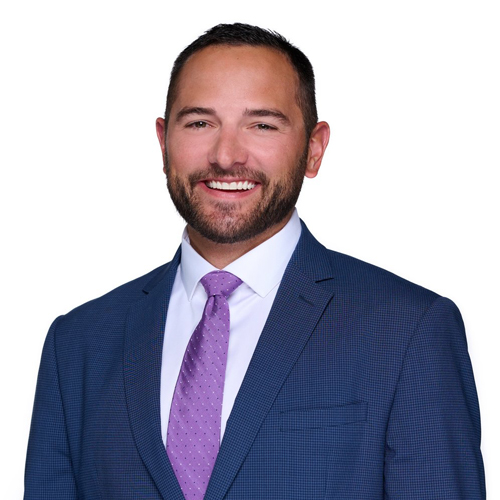You’ve finally reached retirement with a healthy nest egg and many years of bliss ahead of you. You spent years diligently saving and investing to reach this momentous milestone, and it’s time to make the best of it. Unfortunately, the easy part (at least financially) is already over.
A million guides, books, and gurus are out there explaining how to build wealth. Few, though, describe how to start winding that sum of money down slowly enough that you have a decent lifestyle but not so fast that you run out too early. But that’s what you must do now – what you have is what you have, and every dollar counts. Of course, some of your investments will continue to grow, but your days of steadily contributing to your savings are most likely gone.
Figuring out how much to withdraw each month is highly complex, with numerous factors – your life expectancy (possibly impossible to predict), inflation, market returns, and taxes. While some of these things are out of our control, we can at least partially manage one of the most significant expenses in retirement – our tax obligation.
By utilizing a wide range of investment accounts with varying tax statuses, we can produce a tax savvy retirement plan that enables us to stay in the lowest tax bracket possible through retirement, stretching our savings and reducing risks.
The three critical aspects of a tax-efficient retirement are as follows:
- Tax-efficient investments
- Tax-efficient accounts
- Tax-efficient withdrawals
This article will focus primarily on the accounts available to you and strategies to remove those funds while keeping as much as possible in your pocket.
Tax-advantaged Accounts
Fortunately, the government has given us a wide range of options when it comes to investing our savings in a tax-efficient manner to incentivize us to be responsible for our retirement and not rely so heavily on Social Security or the already antiquated company pension.
The Brokerage Account
Although not explicitly designed for retirement planning, brokerage accounts undoubtedly offer tax benefits in the form of the long-term capital gains tax, which is (at the time of writing and historically) significantly lower than regular income tax rates.
In 2023, long-term capital gains rates stand at 0%, 15%, and 20%, applying to assets held for over a year and then sold for a profit. For a straightforward example, if you purchase a share of Microsoft stock for $100, hold onto it for three years, and sell it for $200, you owe capital gains tax on that $100 profit. ‘Qualified’ dividends also receive this favorable tax rate. Any taxes incurred are due only upon selling the asset. There are no taxes on the ‘unrealized’ gains – at least, not yet.
Pay close attention to the ‘long-term’ adjective, however. Any shares bought and sold in less than one year do not qualify for the lower long-term capital gains rate. Instead, the IRS views the profits as ‘short-term’ capital gains, which in 2023 happen to be taxed the same as ordinary income. That is, much higher.
Tax-Deferred Accounts
Here we’re talking about the ‘Traditional’ retirement accounts, such as the IRA and 401(K). These accounts certainly were created to aid in retirement planning by creating an immediate monetary benefit in the form of a tax deferral, potentially lowering one’s tax bracket in the year of contribution. Contributions and earnings are taxed upon withdrawal as regular income tax, meaning standard tax brackets apply.
Eventually, you’ll owe taxes on those contributions and earnings, but reducing your tax bracket can provide significant savings. Over the years, those tax reductions add up.
Post-Tax Accounts (Roth)
The Traditional IRA and 401(K) each have a Roth variant. With a Roth account, you pay taxes first and then contribute post-tax funds into your account. From there, they grow tax-free. As long as you operate according to IRS rules and regulations, withdrawals will also be tax-free. So, while you don’t receive an immediate benefit like a Traditional IRA or 401(K), you receive massive tax benefits later.
As you already paid taxes on these funds, withdrawals don’t count as taxable income – they won’t drive you up a tax bracket, nor will they increase your Medicare premiums. Additionally, you can let those funds grow forever, as no rule states you must begin withdrawing from them. Creating an income plan is more straightforward, as there is no guesswork to determine how much you’ll owe in taxes. What you see in your account is exactly what you have.
By utilizing these tax-advantaged accounts, especially those specifically designed for retirement, you already have a leg up tax-wise regarding your retirement. However, contributing to them is just half the battle. Now you must begin pulling from them in a tax-efficient manner. A couple of theories endeavor to determine the best way of doing so.
The Traditional Withdrawal Method
Conventional wisdom suggests drawing from your retirement plans according to their tax status. As brokerage accounts offer the least tax efficiency, you may want to sell off these assets first, considering you must pay dividends taxes each year. In the meantime, your tax-deferred and post-tax accounts can continue growing without interference.
Next, you move on to your Traditional IRA and 401(K). You’ll owe taxes on your withdrawals according to your tax bracket, and once you hit a certain age, you’ll have to start taking your RMDs, which are calculated as a percentage of your savings determined by your life expectancy. The older you get, the higher that relative percentage will be. If you haven’t extinguished your capital gains account, you may find yourself in a higher tax bracket due to your new source of income.
Finally, you move on to your Roth, which has hopefully earned a few more years of compound gains. If you are still pulling from your Traditional IRA or 401(K), you needn’t worry; you won’t be pushed up a bracket. You also won’t be forced to take out a certain percentage of your Roth, so you can easily tap into it as necessary to supplement your other income sources. Your Roth account can also be passed on to an heir as a tax-free gift if you choose to do so.
Bracket Reduction Method
One downside of the above strategy is that it doesn’t consider your specific tax brackets. You may find it beneficial to withdraw from your 401(K) to a certain point and then switch to your Roth funds to prevent a tax bracket jump.
Let’s use an example. John and Mary are 65 and in their first year of retirement. They both are delaying their Social Security withdrawals to optimize their overall benefits. Together, they plan on spending $125,000. Firstly, we need to subtract the Standard Deduction of $27,700, so they have to withdraw $97,300. If they remove that much from their Traditional, pre-tax accounts, they’ll be in the 22% bracket.
A savvy tax strategy would be to withdraw $89,449 from a pre-tax account to stay in the 12% tax bracket and withdraw the remaining $7,851 from a post-tax account, leading to $1,727.22 in tax savings.
- $22,000 is taxed at 10% = $2,200 in taxes.
- $67,449 is taxed at 12% = $8093.88.
- $7,851 taxed at 22% if withdrawn from a pre-tax (traditional) account = $1,727.22
Saving $1,727 in taxes may not seem like much, but it certainly adds up over time. You need to consider whether allowing your Roth funds to grow untouched will provide a larger payout in the long run than using these funds for immediate tax savings.
Bracket Filling Method
Let’s consider another scenario where you may want to withdraw more than you need. Jake, 63, a friend of John and Mary, requires only about $75,000 a year for his desired lifestyle. Jake has a standard deduction of $13,850 as a single filer in 2023, so he only needs to withdraw $61,150 from his savings. But Jake is aware that he’ll have other sources of income in the future that will push him up a tax bracket, so he decides to take advantage of the lower tax bracket while he can. He, therefore, withdraws $95,375, pays his taxes at the 22% bracket, and puts his unneeded funds into a Roth.
You may be wondering why he’d risk those funds by investing them when he’s already retired. Well, just because you’re retired doesn’t mean you should stop planning for the long term. Jake is only 63 – he’s planning on keeping those funds in his Roth for twenty-plus years of compound, tax-free growth.
Again, depending on your financial situation and goals, you may want to abstain from removing Roth funds or try to fill up your tax bracket. Many other factors should be considered, such as Social Security, Medicare premiums, health/life expectancy, RMDs, other sources of income, and more.
In Conclusion
Planning doesn’t stop at retirement – it merely shifts focus. Moving from the wealth accumulation to the distribution phase requires a carefully designed yet flexible strategy aligned with your unique financial situation. However, with a thoughtful approach and partnering with a fiduciary financial advisor, you can optimize your retirement finances for maximum efficiency and longevity.
If you’d rather not leave your retirement to chance and would like to partner with a fee-only fiduciary who cares, feel free to schedule a zero-pressure, zero-obligation consultation by clicking the button below.













